I don't have a collection of German infantry for the early war (well, not yet anyway) but for various reasons I seem to have gathered a small collection of armour for those years. At this stage I'm probably more interested in playing 1942 on the eastern front and a part of this collection has been put together with Fall Blau and the Stalingrad campaign in mind. It’s by no means comprehensive. I’ve tended to acquire models as I’ve needed them for other games or campaigns.
First though, we start at the very beginning with a PzIa. The two below are from S-Models. They were bought originally for my Sino-Japanese war project but somehow I’d acquired more kits than I needed, so when we came to play the Many Rivers to Cross the campaign set in the Netherlands in 1940 I made these up and painted them for the Germans instead.
They saw action in several games in that campaign.
Not long after I made them I came across the picture below. While my tanks may appear a slightly lighter grey than those in the picture I am pleased with the way my weathering matches up, in particular the way the running gear and tracks are noticeably dustier than the hull and the turret.
While I've been fortunate to visit many museums and see a fair amount of German armour the one tank that has alluded me so far has been the Panzer I. I suspect not many survived.
The Pz38t was one of a couple of Czech designs that saw service right up to the Barbarossa campaign. Not a bad tank for its time with a decent mix of speed, armour and armament although by 1941/42 it was obsolete. That said the chassis was to see future use. This is a Pz38t from the Plastic Soldier Company set. While it's a sturdy model I think PSC have gone a bit overboard with detail like the rivets which appear over-scale. Unfortunately I've only exacerbated the issue by highlighting them with the paint job.
Here is one in the collection at the Australian Armour and Artillery Museum and while the rivets are a noticeable feature of the tank they are not as pronounced as they appear in the PSC models.
Before I returned to miniature gaming I made a lot of models in 1/35 scale and the Pz38t was one of those. As you can see with this kit the rivets are more in scale and closer to the look of the original tank.
Although never intended as a main battle tank the PzII took part in numerous operations in the early war and were still present in some units as late as 1942. This is another from S-Models and was made with our Netherlands 1940 campaign in mind.
Unlike the Panzer I, I've seen several PzII in various museums. The one below is at the Tank Museum at Bovington and it's in the early war two tone brown and grey colour scheme.
The Armourfast models are inexpensive and quick to build but they do suffer from a shortage of detail. I have several kits from them and I've often found with a bit of additional detail like stowage they come up well. Unfortunately these are one of their most basic kits and I think have the least detail I've seen on any of their models. The AB crew figures are my best attempt at improving them.
They have one of these early variants at the Australian Armour and Artillery Museum.
And one with an open top with the short barrelled 7.5cm gun.
They have the very similar looking later model Sdkfz234/4 version in the Tank Museum at Bovington.
While the Sdkfz 251 half track might be an iconic German vehicle they were not as numerous as one might imagine nor available in the sorts of quantities the Wehrmacht would have preferred. Nonetheless they were present in several panzer divisions from 1939. The Australian Armour and Artillery Museum has a variant of one of these that was built in Czechoslovakia after the war.
They supply a figure manning the light machine gun. It is easy to hold him in place when the MG is placed in the gun shield and so I haven't attached him permanently so I can remove him during a game.





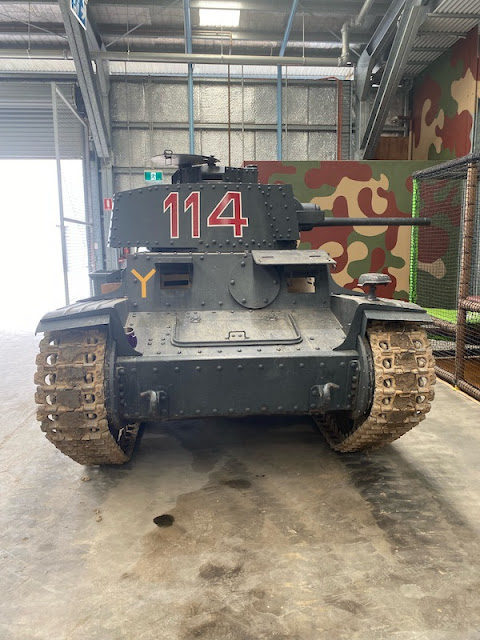



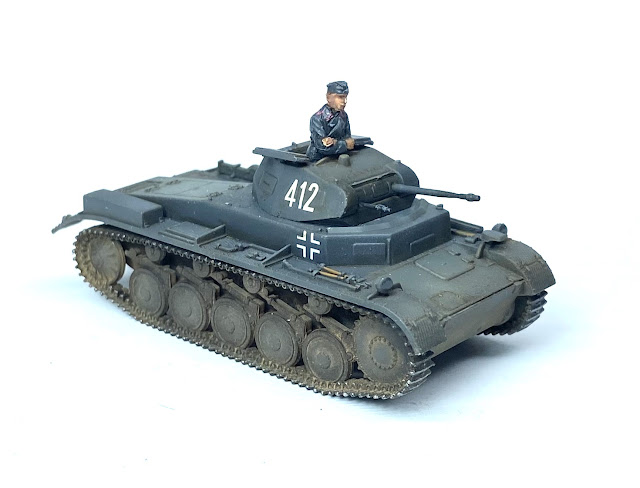

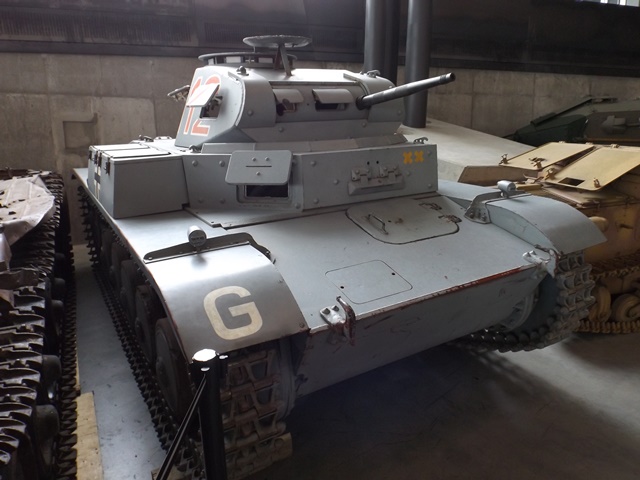


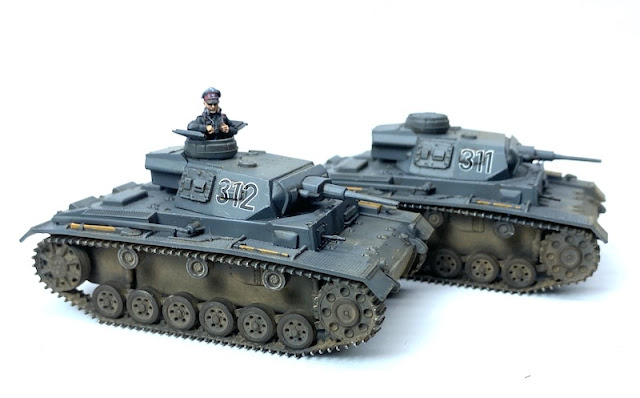






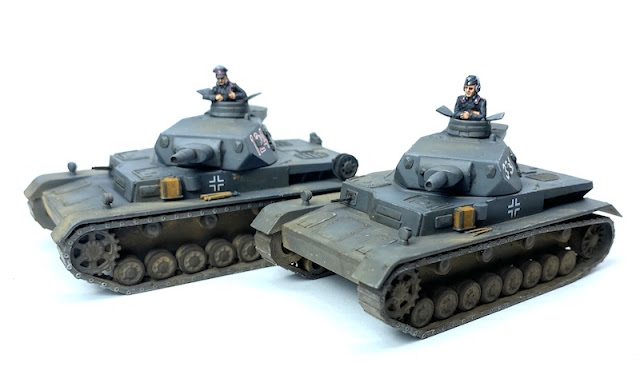















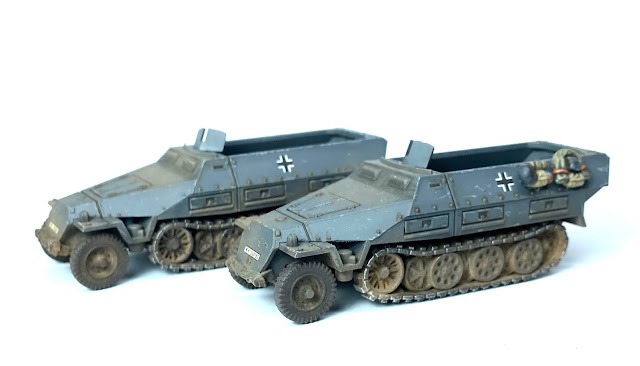


Now I've seen your modelling heritage I understand why your vehicles always look so good. BTW re your StuG comment, isn't artillery waffenfarbe red and white is infantry?
ReplyDeleteAh yes, you’re correct on that, thanks.
DeleteA rather splendid array of early war armour, all it needs is some infantry and heavy weapons support now🙂
ReplyDeleteDon’t tempt me! How many more different German units do I really need? As it happens Dave has the early war covered off quite well, so that gets me off the hook (for now).
DeleteGreat collection - looking forward to seeing some AARs from your eastern front games - that's the period / sector I'm mot interested in and what I'm slowly building up some forces for.
ReplyDeleteI’d love to see more eastern front campaigns for CoC. I wasn’t overly impressed with the two set during Citadel, I think something set around Stalingrad would suit platoon level actions much better. Perhaps I need to write one!
DeleteIndeed! As far as I am aware there aren't any Eastern Front pint-sized campaigns for the early war. I have seen a couple for I Ain't Been Shot Mum which could potentially be adapted but they focus on Barbarossa IIRC. A campaign book was released for Bolt Action for Case Blue and Stalingrad - I don't know if they could be adapted or if they are too poor to bother with at all. In short, yes you will need write one yourself!
DeleteWell done article. Very nice models around your theme.
ReplyDeleteThank you!
DeleteGreat blog entry- wonderful looking collection.
ReplyDeleteThanks!
DeleteA nice collection of vehicles. A few Stug IIIs with extra armour and up gunned chassis saw action in Syrian service all the way up to 1967.
ReplyDeleteI think possibly a PzIV too, but I don’t think I’d want to be sitting in any one of those facing a Centurion!
DeleteVery nice indeed - I am inclined to agree with you about the tendency of manufacturers to over exaggerate the rivets on any 38(t) model - I have three 28mm Warlord versions and I feel they suffer from a similar fault!
ReplyDeleteI am just working my way through building up a Blitzkrieg era force in 28mm - so, many of the vehicles are familiar to me - although I have no Pz I or II yet - and I probably should have!
Glad I’m not alone with the rivet issue. There’s no doubt they are a prominent feature of the 38(t) but it doesn’t need to be overstated.
DeleteVery cool to have the miniatures next to pics of the real thing. Very cool that you have both, are from your own collection. Very cool miniatures as well, rival the real thing, 😁
ReplyDeleteI wish i could paint my tanks like this :D. Love your blog. Just a quick remark on the Sdkfz 251/1... The D version you build up was not used before 1943. So for a early war army it would be more suitable to go with the Ausf. C.
ReplyDeleteSorry for the tardy response, I’ve been traveling. Thanks for your comments, much appreciated and thanks for the info on the Sdkfz251. I’ve used those PSC halftrack sets as a bit of a catch all for all 251 models. One day I’ll get around to something more specific for that early war period (although probably not before I paint some figures to go with it!).
Delete